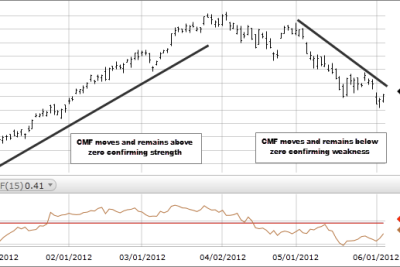
History, Map, Population, Economy & Facts About India

India, located in South Asia, is one of the world's most populous countries and a vibrant constitutional republic that encompasses a rich tapestry of cultures, languages, and traditions. With 28 states and 8 union territories, its capital, New Delhi, serves as a bustling metropolis reflecting the country’s historical significance and contemporary advancements. The country is renowned for its secular holidays, including Independence Day on August 15 and Republic Day on January 26, which honor its freedom and constitution. Moreover, each year, millions celebrate significant religious festivals such as Vasantpanchami, Holi, Dussehra, and Diwali, which highlight the diversity of the Indian people.
The historical overview of India dates back to ancient times, featuring the rise of formidable cultures like the Indus civilization around 2600-2000 BCE and the later Ganges civilization. Geographically, it shares borders with several countries, such as Pakistan, Nepal, and China, impacting its socio-political dynamics. After the end of British colonial rule in 1947, India underwent a significant transformation, partitioning into India and Pakistan, and subsequently Bangladesh. As a result, the nation embodies a unique blend of ethnic groups and languages, which defines the identity of the people from India today.
Historical Overview of India
The history of India is vast and complex, characterized by a myriad of empires, cultures, and significant events that shaped the nation we know today. The roots of Indian civilization can be traced back to the Indus Valley Civilization, one of the world’s oldest urban cultures, flourishing around 2600 BCE. This ancient civilization was renowned for its advanced city planning, architecture, and social organization.
Following the decline of the Indus Valley Civilization, the Aryan migrations led to the establishment of the Vedic age, during which the foundation of Hindu society and culture was laid through religious texts known as the Vedas. The subsequent Maurya and Gupta Empires marked significant achievements in governance, philosophy, arts, and sciences, with renowned figures such as Emperor Ashoka and scholars like Aryabhata making their mark in history.
The medieval period saw the rise of regional kingdoms and the arrival of foreign influences, including the Persians, Mughals, and others. Under the Mughal Empire, India experienced remarkable cultural fusion, demonstrated through art, architecture, and literature, leading to the Taj Mahal's construction. However, the advent of European colonialism in the 18th century witnessed significant changes, culminating in British colonial rule which drastically altered India’s social and economic landscape.
As India transitioned towards independence in the early 20th century, national movements led by figures such as Mahatma Gandhi fostered a sense of unity among the Indian people, emphasizing non-violent resistance and self-determination. In 1947, India gained independence from British rule, yet the partition led to widespread violence and the creation of Pakistan. This pivotal moment laid the foundation for a democratic republic that celebrates its diversity while facing ongoing challenges related to governance, socio-economic disparities, and communal tensions.
Geographical Map and Borders
India is located in South Asia and is surrounded by important natural features, geography, and neighboring countries. It covers an area of approximately 3.287 million square kilometers, making it the seventh-largest country in the world. To understand the geographical significance of India, one can refer to a detailed geographical map showcasing its extensive borders.
India shares its borders with several countries: to the northwest, it is bordered by Pakistan; to the north by Nepal and China; and to the northeast by Bangladesh and Bhutan. Additionally, the Indian Ocean lies to the south, with the Andaman and Nicobar Islands positioned strategically in the southeastern region. This geographical positioning not only plays a crucial role in India's economy and security but also serves as a cultural crossroads, influencing the practices and lifestyles of the people from India throughout history.
The Indian subcontinent's diverse topography includes the towering Himalayas in the north, the Thar Desert in the west, fertile plains, and plateaus, and a long coastline dotted with major ports. Its climate ranges from tropical in the south to temperate in the north, contributing to its ecological variety and agricultural potential, vital for the livelihood of millions of Indian people.
Population Statistics and Demographics
As of the latest estimates, India is home to over 1.4 billion residents, making it the second-most populous country globally. The population is characterized by an incredible demographic diversity, with thousands of communities representing various ethnicities, languages, and cultures. The people from India belong to over 2,000 distinct ethnic groups and speak more than 1,600 languages, with Hindi and English recognized as the two official languages.
The median age of the population is approximately 28 years, showcasing a young demographic that plays a crucial role in the country’s economic development. Urbanization is rapidly increasing, with around 34% of the population living in urban areas. Major cities like Mumbai, Delhi, and Bengaluru are at the forefront of this urban shift, with urban centers becoming hubs of economic activity and cultural exchange among the Indian people.
India is characterized by a high birth rate; however, its fertility rate has been declining, leading to a shift in population growth dynamics. The country is also experiencing a demographic transition as older generations are increasingly being supported by a growing workforce. This shift presents both challenges and opportunities in addressing the needs of a diverse population, including education, healthcare, and social welfare, that affects the india peoples significantly.
Economic Landscape and Growth
India has a complex and diverse economy that has evolved significantly over the past few decades. Traditionally reliant on agriculture, India’s economy has diversified into various sectors, including manufacturing, services, and technology. As of recent data, the Indian economy ranks as the sixth-largest in the world in nominal terms.
Over the past two decades, India’s economic growth rate has been remarkable, often exceeding 6% annually, fueled by factors such as foreign direct investment, technology innovation, and a robust market for goods and services. The country is a global leader in information technology and software development, with major companies like TCS, Infosys, and Wipro employing millions of Indian people.
However, despite impressive economic strides, India faces significant challenges, including income inequality, regional disparities, and high unemployment rates in certain areas. The government is undertaking various reforms aimed at boosting the economy, such as the Make in India campaign, aimed at encouraging manufacturing, and Digital India, which promotes technology adoption among the people from India.
In addition, India’s vast natural resources, including minerals, forests, and agricultural land, provide a unique opportunity for sustainable development and economic growth. The government’s emphasis on renewable energy and sustainable practices aims to harness these resources while addressing environmental concerns, benefiting the entire population of India.
Cultural Diversity and Society
India is one of the most culturally diverse nations on earth, home to numerous religions, languages, ethnicities, and culinary traditions. The cultural diversity of the Indian people is often celebrated through various festivals and rituals, showcasing a melting pot of traditions and influences. Major religions practiced in India include Hinduism, Islam, Christianity, Sikhism, and Buddhism, contributing to the rich spiritual landscape.
The linguistic diversity is equally remarkable: according to the Census of India, hundreds of languages are spoken across the country, with Hindi, Bengali, and Telugu among the most prevalent. Each state has its unique dialects and linguistic heritage, reflecting the distinct identities of the people from India.
Indian society values family ties, community bonds, and traditions that have been passed down through generations. Social structures are often hierarchical, influenced by culture and traditions, such as the caste system, which, despite significant social reform efforts, continues to impact societal dynamics today.
The arts and literature of India also stand testament to its cultural heritage, with significant contributions in literature, dance, music, and visual arts. Festivals such as Diwali, Eid, and Christmas not only highlight religious diversity but also foster communal harmony among the various communities comprising the indian people.
Major Cities and Economic Hubs
India's major cities play a pivotal role in its economic development and cultural exchange. Mumbai, often referred to as India’s financial capital, serves as a hub for commerce, international trade, and entertainment, housing the Bollywood film industry. Mumbai’s bustling streets are filled with vibrant markets, diverse culinary offerings, and cultural sites that attract millions, including both locals and tourists alike.
Delhi, the capital city, acts as the political hub, hosting various government institutions, foreign embassies, and national events. With its rich historical significance, from ancient forts to colonial architecture, Delhi presents a blend of tradition and modernity, making it a focal point for both India’s political and cultural landscape.
Bengaluru, known as the Silicon Valley of India, has emerged as a major center for technology and startups, hosting numerous IT companies and startups that drive innovation and attract talent from across the globe. The city’s youthful and dynamic environment fosters a spirit of entrepreneurship and creativity among the people from India.
Other notable cities, including Kolkata, Hyderabad, and Chennai, also contribute to India’s economic landscape with diverse industries ranging from textiles to pharmaceuticals and education. These cities are essential not only for their economic output but also for their cultural significance as they reflect the rich history and traditions of the regions they represent, embodying the heritage of the india peoples.
Challenges and Opportunities
Despite India’s flourishing economy and cultural richness, the nation faces a myriad of challenges that need to be addressed to ensure sustained growth and development. Some of the key challenges include poverty, education disparities, healthcare accessibility, and environmental sustainability. About 22% of India's population lives below the national poverty line, which highlights the urgent need for social and economic reform to uplift disadvantaged communities, especially in rural areas.
Additionally, the education system grapples with issues of accessibility and quality, as millions of children and youth still lack proper educational opportunities. The government has initiated several schemes aimed at improving education, healthcare, and nutrition among disadvantaged sections of society, recognizing that an educated population is pivotal for the country’s future progress.
On the other hand, there are numerous opportunities to leverage India’s demographic dividend. With a burgeoning young workforce, the nation stands to benefit significantly from technology-driven innovations that address challenge areas and improve overall living standards. Initiatives like Startup India, Make in India, and Skill India focus on promoting entrepreneurship, manufacturing, and skill development, presenting avenues for economic growth and employment for the indian people.
Furthermore, investments in renewable energy showcase India's potential in leading the global fight against climate change while generating economic opportunities in clean energy sectors. The government’s commitment to environmental sustainability, coupled with a culture that embraces innovation, presents a significant opportunity for the nation to thrive in the coming decades.
Conclusion: India’s Global Role and Future
India's historical and contemporary journey has shaped a nation characterized by its resilience, diversity, and potential for growth. As the world's largest democracy, India occupies a unique position on the global stage, playing an increasingly decisive role in international politics and economics. The people from India are known for their contributions in various fields, including science, technology, literature, and arts, making their mark on the global community.
Looking ahead, India’s challenges present a roadmap for development that, if effectively addressed, can lead to significant advancements in the quality of life for its citizenry. The interplay between tradition and modernity within Indian society reflects the strength and flexibility of its cultural identity, fostering an environment conducive to innovation and progress. The path forward for the indian people will hinge upon strategic investments in education, healthcare, infrastructure, and sustainable practices that embrace the country's demographic advantages.
As India moves toward its vision of becoming a $5 trillion economy and a prominent player on the global stage, the opportunities for growth and prosperity are vast. The collaboration of various sectors and the unity of the india people in addressing both challenges and opportunities will undoubtedly pave the way for a brighter future, making India an indispensable player in the 21st century.
Did you find this article helpful? History, Map, Population, Economy & Facts About India See more here Education.
Leave a Reply






Related posts